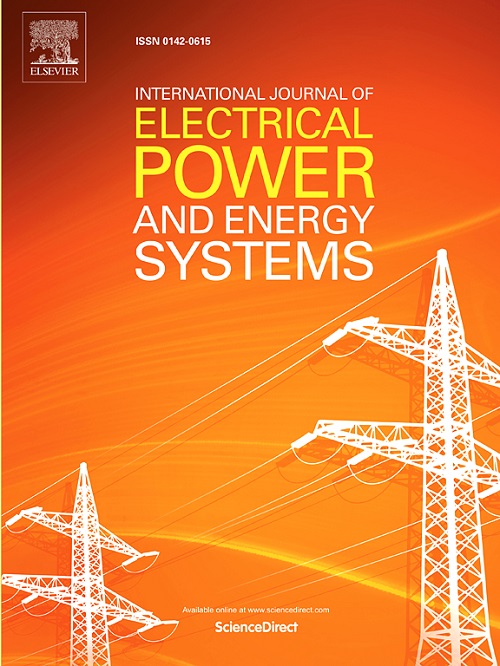Research on single-phase grounding characteristics of low-resistance grounding systems with distributed generation
IF 5
2区 工程技术
Q1 ENGINEERING, ELECTRICAL & ELECTRONIC
International Journal of Electrical Power & Energy Systems
Pub Date : 2025-09-27
DOI:10.1016/j.ijepes.2025.111164
引用次数: 0
Abstract
The network-level characteristics of zero-sequence currents during single-phase ground faults in existing low-resistance grounding systems with inverter-interfaced distributed generators (IIDGs) remain unclear. Moreover, the influence of IIDG integration on conventional staged zero-sequence current protection has yet to be thoroughly investigated. Research on these fault characteristics and the applicability of traditional protection schemes is essential for developing effective protection strategies in IIDG-integrated power systems aand holds considerable practical significance. This paper uses the symmetrical component method to analyze the steady-state characteristics of single-phase ground fault zero-sequence current both before and after IIDG connection, as well as the applicability of traditional stage-type zero-sequence current protection. The results indicate that when a fault occurs on a line with IIDG grid connection, the zero-sequence current between the fault point and the Point of Common Coupling increases, while the zero-sequence current on other lines decreases. Conversely, when the fault is on a line without an IIDG, the zero-sequence current on the upstream line of the IIDG grid connection point and the upstream line of the fault point increases, while the zero-sequence current on other lines decreases. Consequently, the sensitivity of the zero-sequence protection Segment I on some IIDG-connected lines is reduced, and there is a risk of maloperation in Segment I or II of certain protection devices during external faults. Finally, a sub-area protection method is proposed to improve.. the single-phase ground fault handling capability of IIDG-integrated power systems.
分布式电源低阻接地系统单相接地特性研究
现有的逆变器接口分布式发电机(iidg)低阻接地系统单相接地故障时零序电流的网络级特征尚不清楚。此外,IIDG集成对传统分级零序电流保护的影响还有待深入研究。研究这些故障特征和传统保护方案的适用性,对于制定有效的iidg集成电力系统保护策略至关重要,具有重要的现实意义。本文采用对称分量法分析了IIDG连接前后单相接地故障零序电流的稳态特性,以及传统级式零序电流保护的适用性。结果表明:当IIDG并网线路发生故障时,故障点与共偶点之间的零序电流增大,而其他线路上的零序电流减小;反之,当故障发生在没有IIDG的线路上时,IIDG并网点上游线路和故障点上游线路的零序电流增大,其他线路的零序电流减小。因此,在一些iidg连接的线路上,零序保护段I的灵敏度降低,并且在外部故障时,某些保护装置的I段或II段存在误动作的风险。最后,提出了一种分区保护方法。iidg集成电力系统单相接地故障处理能力。
本文章由计算机程序翻译,如有差异,请以英文原文为准。
求助全文
约1分钟内获得全文
求助全文
来源期刊
CiteScore
12.10
自引率
17.30%
发文量
1022
审稿时长
51 days
期刊介绍:
The journal covers theoretical developments in electrical power and energy systems and their applications. The coverage embraces: generation and network planning; reliability; long and short term operation; expert systems; neural networks; object oriented systems; system control centres; database and information systems; stock and parameter estimation; system security and adequacy; network theory, modelling and computation; small and large system dynamics; dynamic model identification; on-line control including load and switching control; protection; distribution systems; energy economics; impact of non-conventional systems; and man-machine interfaces.
As well as original research papers, the journal publishes short contributions, book reviews and conference reports. All papers are peer-reviewed by at least two referees.

 求助内容:
求助内容: 应助结果提醒方式:
应助结果提醒方式:


